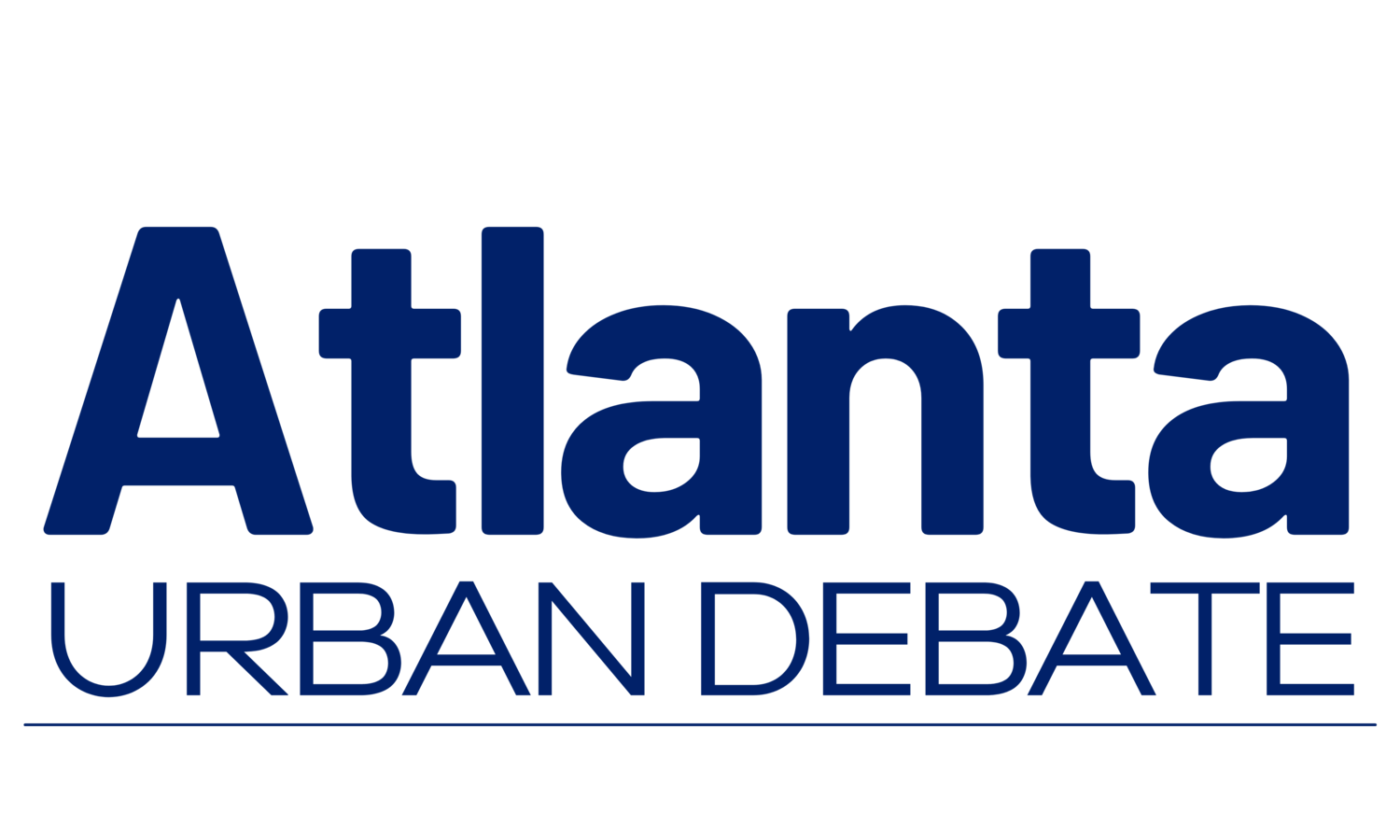The Atlanta Urban Debate League is committed to providing excellent debate education programs, services, and opportunities to diverse students, educators, and members of the community!
Being Affirmative: (Wo)man with a Plan!
Learning Objectives
Introduce parts of an Affirmative (HIPS/SHIP).
Deliver speech from prepared notes.
Time Needed
~20-25 min.
Resources & Materials
Paper (2-3 sheets per student)
Pencil/pen (1 per student)
Teacher Preparation
Review parts of an affirmative (HIPS/SHIP), per the AUDL curriculum and video resources.
Lesson Outline
- (Wo)man With A Plan! (Activity)
- To begin, divide the squad into small groups (no more than three students). Each group will need to deliver a short (1-2 minute) speech, so plan group size accordingly.
- Ask each group to brainstorm 2-3 pet peeves that “grind the gears” of each member.
- When each group is finished, write down the “best” topics on the board for groups to select from.
- The “best” topics will isolate a specific problem that can be solved by a specific action from a particular actor.
- Example: What grinds my gears is the terrible food in the cafeteria.
- The above example contains a distinct problem and can be solved (potentially) with an action from a specific actor (the school district).
- The “best” topics will isolate a specific problem that can be solved by a specific action from a particular actor.
- When each group is finished, write down the “best” topics on the board for groups to select from.
- Once you have a list of quality topics on the board, ask each group to select a topic.
- Give each group time (no more than five minutes) to prepare a “solution” to each problem.
- Once each group is finished, ask a representative from each group to present its solution to the squad.
- Flow each group’s proposal on the board. After each proposal, offer brief feedback. Common errors include:
- No specific actor.
- No specific action.
- Action does not specifically relate to the problem. The plan should answer the question of “Why?” this problem is occurring.
- Example: Cafeteria food is terrible because of a lack of funding. Therefore, the plan should increase funding for the school cafeteria.
- Problem is not fully explained.
- (Wo)man With A Plan! (Reflection)
- After each group has presented, lead a discussion in which you introduce the parts of an Affirmative (HIPS). Reference the strengths and weaknesses of the specific proposals created by your squad.
- Example: This plan has a great solvency explanation but doesn’t explain the harms.
- After each group has presented, lead a discussion in which you introduce the parts of an Affirmative (HIPS). Reference the strengths and weaknesses of the specific proposals created by your squad.
Points of Improvement
Plans do not have a specific solvency mechanism, or a specific actor.
Plans amount to “end X bad thing,” with no explanation as to how that occurs.
Signs of Mastery
Plans have a specific harms explanation, which matches up with a specific solvency mechanism.
Instructor Notes
This activity is best suited for less experienced students.
For large groups, only provide feedback on the “best” and “worst” plans to save time.
